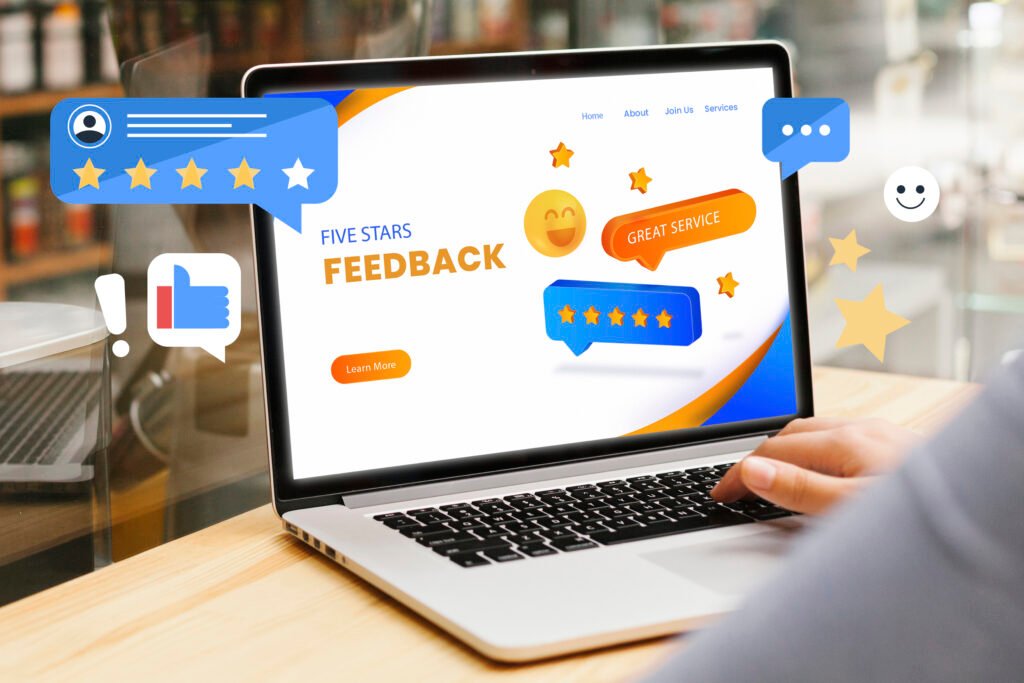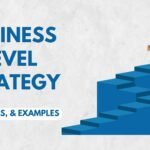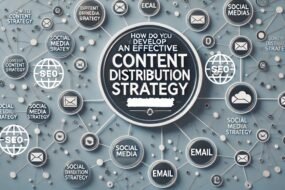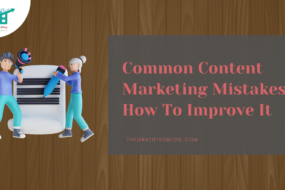
Did you know that 63% of companies still need a documented content marketing strategy? That is according to research by Content Marketing Institute (CMI) and MarketingProfs.
Companies with a content marketing strategy will likely feel their content marketing efforts are successful.
Without a strategy, your B2B content marketing’s success or failure is just a matter of luck – and you risk all your efforts going to waste. That is likely why a similar percentage (64%) say learning how to build a content marketing strategy is one of their greatest educational needs.
If you are in that group and have been wondering how to create a content strategy for your business, we are here to help.
This article will walk you through simple steps to developing and executing a B2B content marketing strategy to help you grow your business without wasting time and money.
What Is Content Marketing Strategy?
Content Marketing Strategy is a strategic approach to planning, creating, distributing, and managing content to attract and engage a target audience. It involves identifying the audience’s needs, crafting valuable and relevant content, and distributing it through various channels to achieve specific marketing goals.
A well-defined content marketing strategy helps businesses build brand awareness, establish thought leadership, drive customer engagement, and ultimately drive business success.
Creating a content marketing strategy involves several key steps:
Set Your Mission and Goals

Setting clear goals and a mission is a good starting point for your content strategy plan. It is essential to define what your mission is early on so that you can focus on what is important. This brief statement makes it easier to focus on what is essential – and what is not – in creating your content so your content marketing strategy stays on track.
A Content Marketing Mission Statement Outlines The Following:
- Your target audience
- The type of content you will use to reach your target audience
- The benefit they will get
Once You Know Your Goals, it is time for you to move to the next step.
Establish Your KPIs
The best way to achieve business goals is to make them specific and measurable. You are setting up key performance indicators (KPIs) for your B2B content marketing plan.
The KPIs will help you know when you have achieved your content marketing goals by providing milestones to check off.
They will include what you plan to accomplish regarding revenue, sales traffic, SEO traffic, and different aspects of digital marketing, like email marketing and social media metrics.
Also, you will want to pay attention to B2B marketing expenditure, tracking your spending on different campaigns, and keeping an eye on the cost of acquiring new leads and making sales.
Know Your Audience

For a successful B2C content marketing strategy, you must be clear about who your audience is so you can create the right content to reach them. The type of audience you target will determine the content you will put out. There are three things you need to learn here.
Collect Demographic Data
The first step is to collect demographics on your website visitors, social media followers, and email subscribers.
Social media, web, and email subscriber analytics will give you the data you need to know about your audience. These data are:
- Age: Analyzing the age demographic provides insights into the primary age groups engaging with your content, helping tailor your messaging and content to resonate with the target audience.
- Gender: Understanding the gender distribution of your audience aids in crafting more targeted and inclusive content, ensuring that your messages are relevant and appealing to both male and female segments.
- Education: Gaining insights into the distribution of genders allows for creating content that aligns with their knowledge level, ensuring that it is both essential and straightforward for comprehension.
- Income: Subscriber income data offers valuable information on the economic status of your audience, guiding pricing strategies and helping tailor marketing efforts to suit their purchasing power and preferences.
You will also get insight into their fundamental interests. To get this information in Google Analytics, go to Audience » Interests » Overview. You will see the market segments that your web visitors fit into.
Get Customer Feedback

Try collecting current customer feedback to learn more about your target audience. That will give you insights into the following:
- How do they feel about the content you are creating
- What are their most urgent needs are
- How can you address their problems with your content
Getting the correct customer feedback can help you:
- Understand your readers’ and subscribers’ priorities
- Decide on the best platforms to reach your customers
- Create your buyer personas
Create Buyer Personas

You can create or flesh out buyer personas with demographic data and customer feedback. Buyer personas describe your ideal customers and readers so you can target content better.
The best customer avatars include information on your customer’s pain points, challenges, sources of information, and behavioral motivators.
When you know all this, you will have a better understanding of the following:
- Content Preferences: By understanding your customer’s pain points, challenges, information sources, and motivators, You can customize your content to align with their likes and inclinations, increasing the likelihood of engagement and resonance.
- Benefit Recognition: Knowing your audience’s pain points It empowers you to create content that specifically meets their requirements, demonstrating the tangible benefits of your product or service and how it can help them overcome challenges.
- Emotional Connection: Insights into your customer’s sources of information and behavioral motivators enable you to create content that resonates emotionally, making them care about your offerings by aligning with their values, aspirations, or desires.
Figure Out The Best Content Channels
As you work through this process, you will understand where your audience is hanging out and where you already have a successful online presence. Focus on what works and expand from there rather than trying everything simultaneously.
But to be sure, you will need to take another look at web analytics. Go to Acquisition » Social » Overview from your Google Analytics dashboard to see the leading social media platforms where your content is shared.
With this information, you can easily decide which social media platforms to target to get shares and engagement for your content.
Decide On Content Types
You need to decide on the types of content you need to create. There are some types of content that every content strategy will include.
Most successful B2C content marketing strategies rely on having a central core of content published on your site (or home base), which can then be repurposed and shared on other sites (outposts).
So, blog posts are essential to your content marketing mix and deliver strong results. Ideally, your blog posts will be actionable, valuable, and shareable and may include various article types.
Identify and Allocate Resources
Now that you know what type of content you plan to create, who it is for, and where you plan to share it, ensuring you have everything you need to deliver your content marketing strategy is vital. That involves answering questions like:
- Who oversees producing and maintaining content?
- What physical, human, or digital tools and resources do you need to create the content?
- What will be your publishing workflow, including content scheduling?
Create A Content Calendar

As part of your content strategy, you will need to know precisely when to publish your content on each platform you want to use.
Lack of planning is a crucial content marketing mistake, so it is essential to use a content calendar to get all your content scheduled. There are lots of different ways you can do this.
For instance, you can use Google Calendar and put the due dates for each piece of content. That works well, especially if you are publishing little content.
That is the most straightforward approach, but if you publish a lot of content and have to manage a content team and the production workflow you have decided on, you will likely want sore features.
Create Content
As you have seen, your B2B content marketing strategy has a lot of prep work before you create a piece of content. But now it is time to do just that. We will use a blog post as our example, but these tips will work for almost any content creation.
With the research you have already done, you will have an idea of what type of blog post to create for content marketing for startups. For example, list posts and how-tos are popular with most readers.
It is time to pick a title from the content calendar and start working on it.
Also, Read – How To Become A Content Creator: A Complete Guide In 2023
Distribute And Market

The following essential part of your content strategy is distribution and marketing. That is because you will only get the desired results if handled correctly. For example, you will likely:
- Scheduled Social Media Sharing: Establishing a consistent schedule for sharing content on social media immediately after creation and through a drip campaign ensures a steady and strategic distribution. This approach maximizes visibility and engagement by reaching your audience optimally and maintaining a regular online presence.
- Email Marketing for Subscribers: Email marketing lets you distribute content directly to your website subscribers. This targeted approach ensures that your audience, who has already expressed interest by subscribing, receives updates, valuable information, and relevant content, fostering ongoing engagement and loyalty.
- Influencer Outreach: Notifying influencers in your industry or niche to share your content amplifies its reach. Leveraging influencers’ existing audiences extends your content’s exposure to a broader and potentially untapped market, leveraging the credibility and trust associated with the influencers’ endorsements.
Measure Results

Finally, it is time for you to assess the success of your content marketing strategy. To do this, you will return to those KPIs you set at the start of the content strategy plan and see what has changed and whether you are hitting your targets.
To do this, you can:
- Check the Google Analytics dashboard to see how your content is performing
- Measure social media sharing activity through social analytics tools
- Look at the conversion analytics dashboard to assess the success of your marketing campaigns
You can use many tools to track content marketing success, including Google Alerts and Mention. Both will let you see if your content is being mentioned and shared, helping you hit those KPIs for awareness and engagement.
Tools like SEMRush will help you assess KPIs for your content’s search rank. And you can track email signups through the analytics in your email marketing software.
By monitoring your progress, you can tweak your B2C content marketing strategy regularly so it is always up to date.
Conclusion
While the methods you can use to deliver content to your prospects continually change, the core principles remain the same for developing a quality content marketing strategy based on customer empathy and reliable data.
Even if you are just starting, take your time with the process. Keep moving at the optimal pace.
Also, Read – Why Is Brand Content Strategy Required And How To Create It? –
An Ultimate Guide To Ecommerce Marketing Strategy








No Comments